Before proceeding, refer to
General Plastic Repair
and
Plastic Repair Precautions
.
The following are 3 methods of fabricating a backing patch:

| • | Method 1: Fabricating
a patch directly on the back of the damaged area. Layers of repair material
and glass cloth mat are applied one at a time to a clean and sanded surface. |
| • | Method 2: Cutting a patch from a scrap piece of a replaced
panel. |
| • | Method 3: Fabricating a patch on the outside of the damaged
area to be reapplied to the inside of the damaged area. |
Any method can be used, but one method may be easier than another depending
on the given situation. Read over each of the following methods in order to
decide which will work best in a given situation.
Method 1
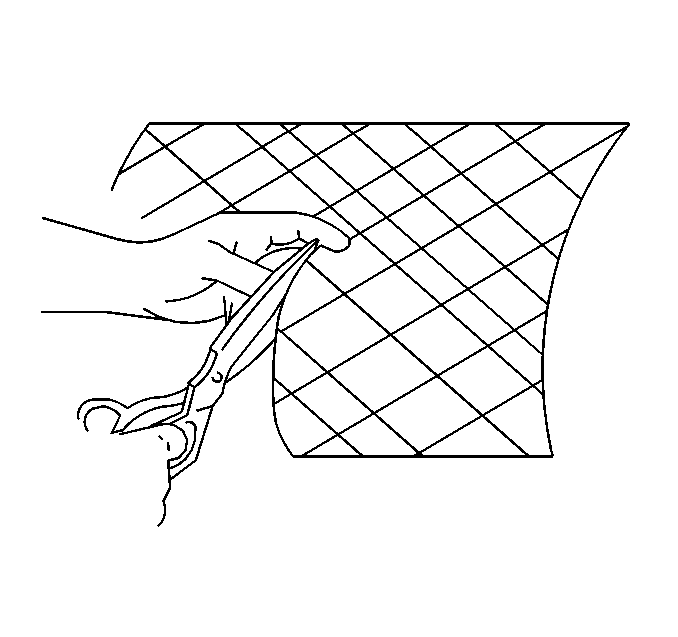
- Cut a piece of the reinforcement
mat, to the desired shape, so that the mat overlaps all sides of the back
of the damage area by 38-51 mm (1.5-2.0 in).
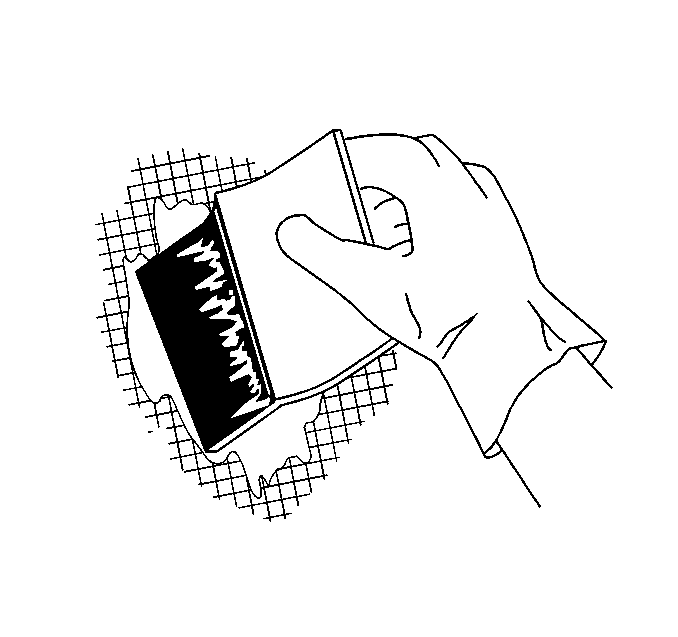
- Determine the proper repair
material. Refer to
Flexible Plastic Part Repair Materials
or
Rigid Plastic Part Repair Materials
.
- Mix the repair material according to the manufacturer's instructions.
- Following the manufacturer's instructions, apply a skim coat of
the repair material to the back of the damaged area.
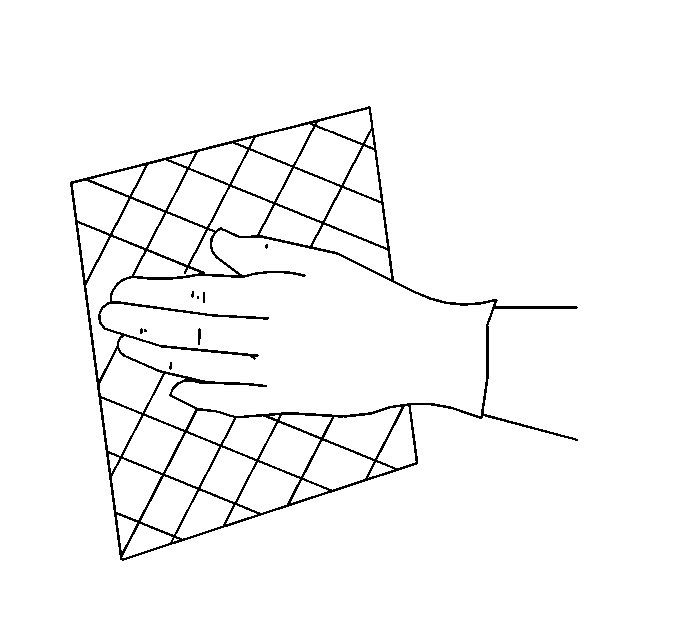
- Lay the pre-cut piece
of reinforcement mat into the skim coat of the repair material.
| • | Use the applicator in order to press the mat until saturated. |
| • | Inspect for exposed fibers or trapped air. |

- Apply additional skim
coats as needed for strength.
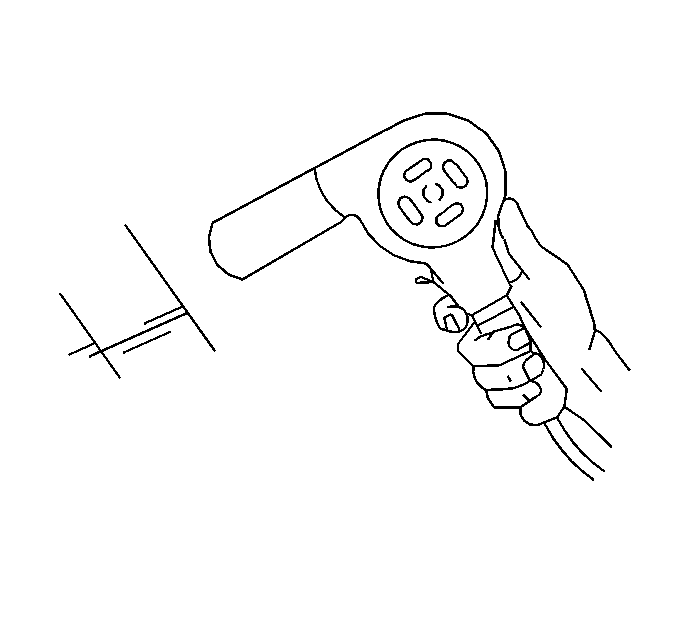
- Allow the material to
cure according to the manufacturer's instructions.
- Allow the repair area to return to room temperature.
Method 2
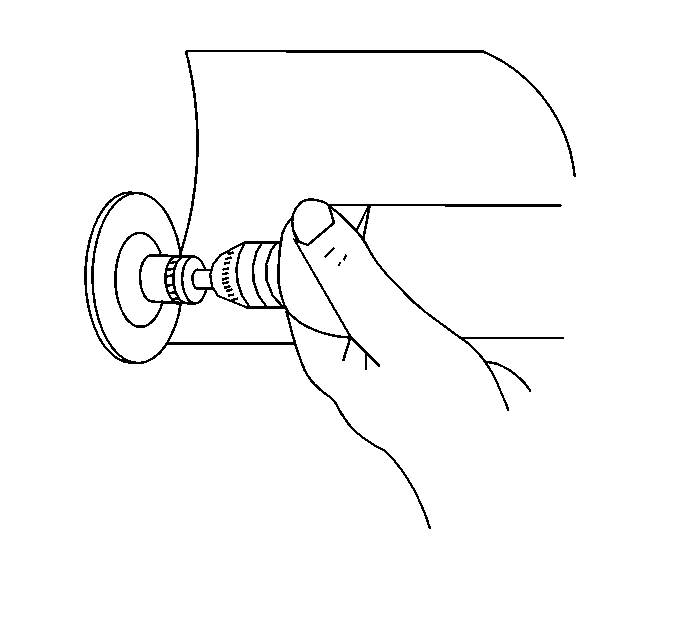
- Cut a patch from a scrap piece of a replaced panel so that the patch
overlaps all sides of the damage area by 38-51 mm (1.5-2.0 in).

- Sand and clean the surface
of the patch in order to remove any paint or finish material which could
prevent proper bonding.
- Determine the proper repair material. Refer to
Flexible Plastic Part Repair Materials
or
Rigid Plastic Part Repair Materials
.
- Mix the repair material according to the manufacturer's instructions.

- Apply, follow the manufacturer's
instructions, a skim coat of repair material to the back of the damaged area.
- Install the patch:
| 6.1. | Align the patch over the damage on the back of the panel. |
| 6.2. | Clamp or prop the patch onto the panel. |
| 6.3. | Cover with repair material any voids or gaps a the edges of the
patch that could allow entry of water or chemicals. |

- Cure according to the
manufacturer's instructions.
- Remove the clamp or the prop when curing is complete.
Method 3
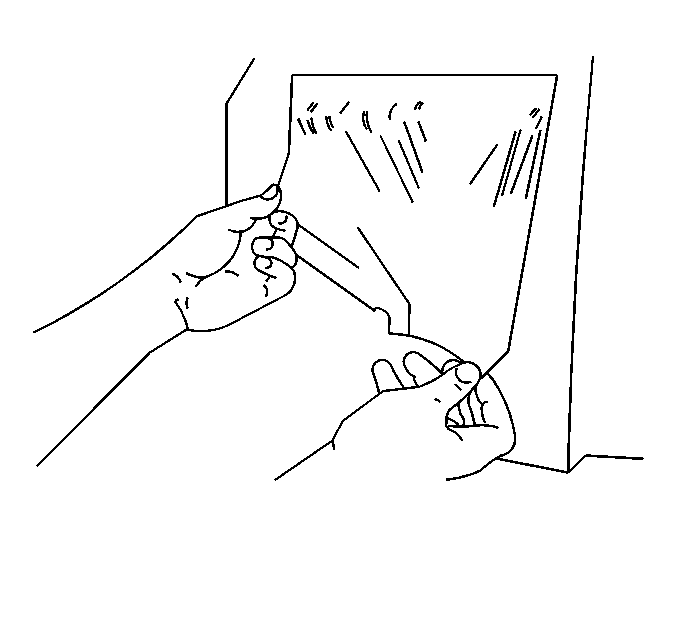
- Cut a piece of wax paper
or polyethylene film material such as that used to wrap food:
| 1.1. | Cut the material to extend about 75 mm (3 in) beyond
the repair area. |
| 1.2. | Tape the material to the outside of the repair surface. |

- Cut a piece of the glass
cloth mat to the desired shape, extending the mat 38-51 mm (1.5-2.0 in)
beyond the repair area.

- Determine the proper repair
material. Refer to
Flexible Plastic Part Repair Materials
or
Rigid Plastic Part Repair Materials
.
- Mix the repair material according to the manufacturer's instructions.
- Apply, follow the manufacturer's instructions, a layer of the
repair material.

- Place a layer of the mat
over the repair material.
- Smooth out any wrinkles in the mat. Follow the contour of the
panel.

- Apply a coat of repair
material.

- Cover the repair material
with the wax paper or polyethylene.
- Press against the wax paper with a saturation roller or squeegee
in order to ensure saturation of the mat and to remove any air bubbles.
- Continue applying layers as before as needed to strengthen.
- Form the patch to match as close as possible the surface of the
panel.

- Cure according to manufacturer's
instructions.
- Allow to return to room temperature.
- Remove the patch.

- Remove the wax paper or
polyethylene.

- Apply a skim coat of repair
material.
- Install the patch:
| 18.1. | Align the patch over the damage on the back of the panel. |
| 18.2. | Clamp or prop the patch onto the panel. |
| 18.3. | Cover with repair material any voids or gaps at the edges of the
patch that could allow entry of water or chemicals. |

- Cure according to the
manufacturer's instructions.
- Remove the clamp or the prop when curing is complete.




















